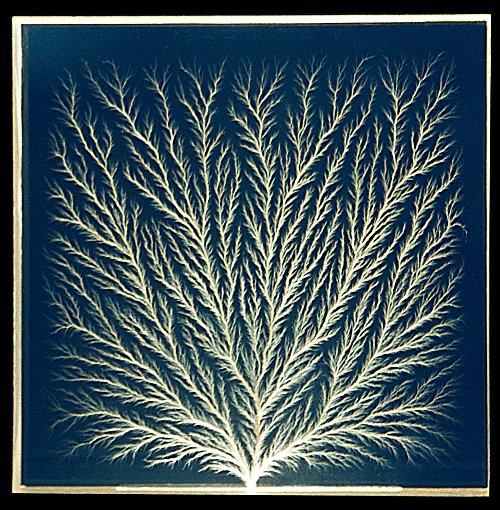Beamtree

Some very beautiful designs are made in clear plastic by bombarding the plastic with a defocused low-energy electron beam traveling almost the velocity of light.
The electrons penetrate the plastic about a quarter of an inch, and then stick there without visual effect. As more and more electrons are embedded in the plastic, their mutual repulsion causes great forces to build in the plastic to expel them.
If the filling process is stopped before the electrons break out, a small prick with a metal punch at one point on the surface of the plastic will cause all of the electrons to come out at that point with an arc and a bang.
Permanent damage to the plastic caused by the current flow appears as a tree-like structure, though more accurately it should be viewed as a map of the confluence of many small streams flowing into larger ones and eventually to a single river of charge exiting at the discharge point. This tree-like structure is known as a Lichtenberg figure or Lichtenberg tree, and is named for Georg Christoph Lichtenberg (1743-1799) who first documented the phenomenon.
During the bombardment process, 16 inches of steel are used to shield the operators from the electron beam's radiation. After about a minute the beam is turned off, and the plastic block is ready to be pricked. At first the plastic retains a brown color due to the intense radiation caused by the electrons striking it. But the plastic does not retain any radiation, and is completely harmless. In time, the brown color fades and disappears. (Placing the block in direct sunlight will speed the process.)
Beam trees are highly prized at SLAC, and are often mounted on decorative wooden bases and given as gifts and awards.
This History Bit is based on information gathered by: Ron Koontz, Helen Quinn, Hobey DeStaebler, Jean Deken and the late Bill Ash.
